In skirt sewing, elastic can significantly influence the final garment’s comfort, durability, and overall aesthetic appeal.
With various types of elastic available, each possessing unique characteristics, selecting the right one is pivotal.
The options abound, from the soft and stretchy knit elastic suitable for casual wear to the firm and textured woven elastic ideal for structured skirts.
This exploration delves into the diverse world of elastic choices. It offers insights into their features and applications, guiding novice and seasoned sewists in crafting skirts that fit impeccably and stand out in style and comfort.
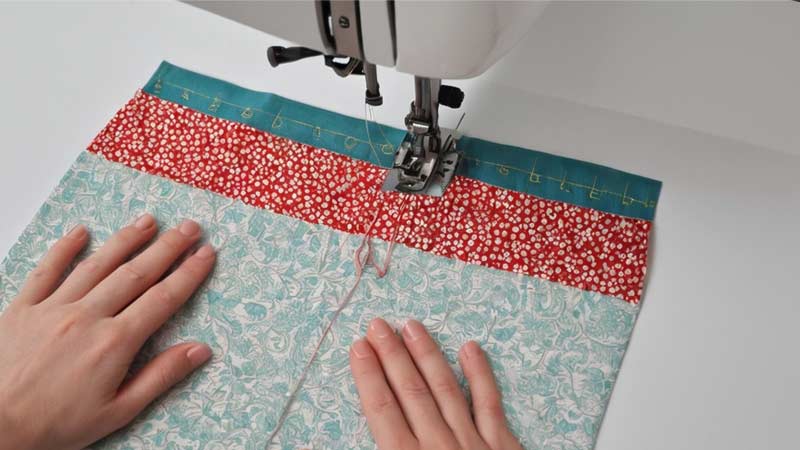
Are There Better Elastic for Skirt Sewing?
When it comes to sewing skirts, the choice of elastic plays a crucial role in determining the garment’s comfort, fit, and overall aesthetics.
Elastic is an essential component in waistbands, ensuring that the skirt stays securely in place while allowing for ease of movement. There are various types of elastic available, each with its unique characteristics.
Here are some popular options and considerations for choosing the best elastic for sewing skirts:
Knit Elastic
- Characteristics: Knit elastic is made from a soft, stretchy knit material, often containing rubber or spandex. It is comfortable against the skin and retains shape well after multiple uses.
- Suitability: Ideal for casual and everyday skirts, especially those made from knit fabrics. Knit elastic is excellent for waistbands in skirts that require flexibility and comfort.
Woven Elastic
- Characteristics: Woven elastic is created by weaving fibers, forming a firm, less stretchy band. It has a textured surface and is known for its durability.
- Suitability: Suitable for skirts requiring a firmer hold, such as in structured or tailored skirts. Woven elastic is a good choice when working with heavier fabrics that may require more support.
Braided Elastic
- Characteristics: Braided elastic is constructed by braiding fibers together, creating a strong and resilient band. It does not narrow when stretched and is less likely to lose elasticity.
- Suitability: Ideal for heavier fabrics and skirts where a robust elastic is needed. Braided elastic is suitable for projects that may experience frequent stretching and movement.
Fold-Over Elastic (FOE)
- Characteristics: Fold-over elastic has a visible center crease, making it easy to fold over the raw edges of the fabric and stitch in place. It is often made from a combination of nylon and spandex.
- Suitability: Commonly used in activewear or dancewear skirts due to its ability to provide a clean and finished look. FOE is a popular choice for projects where a decorative edge is desired.
Clear Elastic
- Characteristics: Clear elastic is transparent and provides stretch without adding bulk. It is typically made from a soft, rubbery material.
- Suitability: Ideal for lightweight fabrics or when a discreet, barely visible elastic is desired. Clear elastic is often used in skirts where the focus is on the fabric, and a conventional elastic may be too noticeable.
Wide Waistband Elastic
- Characteristics: This elastic type is more comprehensive than standard elastic, providing more support and comfort. It is often made from a combination of synthetic and natural fibers.
- Suitability: It is excellent for skirts with a wide waistband, as it evenly distributes the pressure. Wide waistband elastic is an excellent choice for projects where a broader, more substantial waistband is desired.
Non-Roll Elastic
- Characteristics: Non-roll elastic is designed to resist rolling or twisting during wear, ensuring the waistband stays flat and in place. It often has a ribbed or textured surface.
- Suitability: Suitable for skirts where the elastic needs to stay flat and not twist inside the casing. Non-roll elastic is a practical choice for projects where maintaining a smooth waistband appearance is essential.
Types of Elastic for Sewing
Elastic plays a pivotal role in sewing, offering flexibility and stretch to garments. The type of elastic chosen can significantly impact the comfort and functionality of the finished product.
Here’s a closer look at different types of elastic for sewing:
Knit Elastic
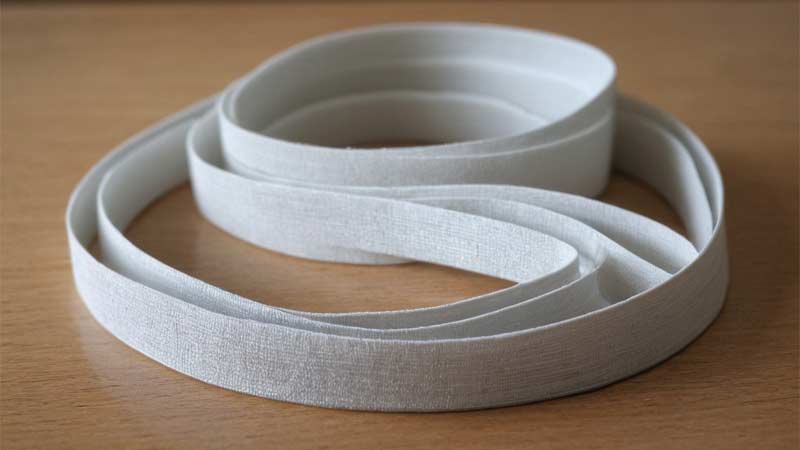
Soft and supple, knit elastic is crafted from a blend of materials that offers unparalleled comfort. Its inherent stretchiness makes it an ideal choice for casual, everyday wear garments.
When used in skirts, knit elastic ensures a gentle, snug fit around the waist, allowing unrestricted movement.
Whether incorporated into lounge-worthy attire or casual ensembles, knit elastic proves to be a versatile and user-friendly option, contributing to the overall ease and wearability of the finished garment.
Woven Elastic
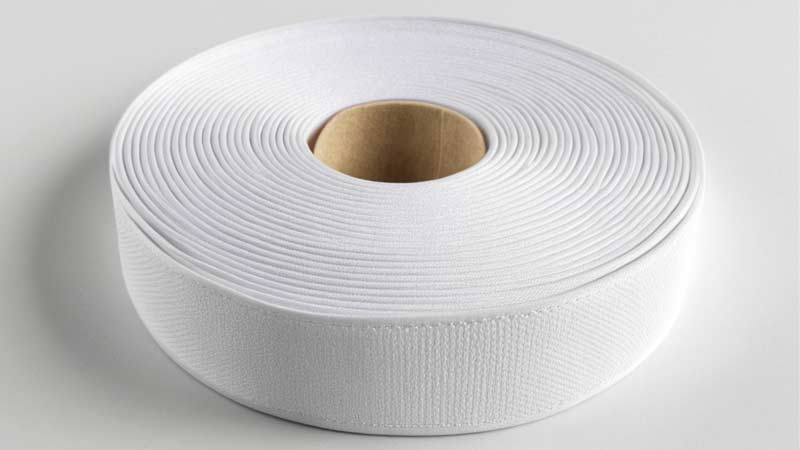
Distinguished by its firmness and moderate stretch, woven elastic caters to projects demanding structure and support.
Tailored projects, such as skirts with a more formal silhouette, benefit from the controlled stretch woven elastic provides.
Its textured surface adds a touch of resilience to the waistband, enhancing the garment’s overall stability.
Woven elastic becomes a reliable choice for those seeking a more defined shape and a secure, polished finish in their skirt creations.
Braided Elastic
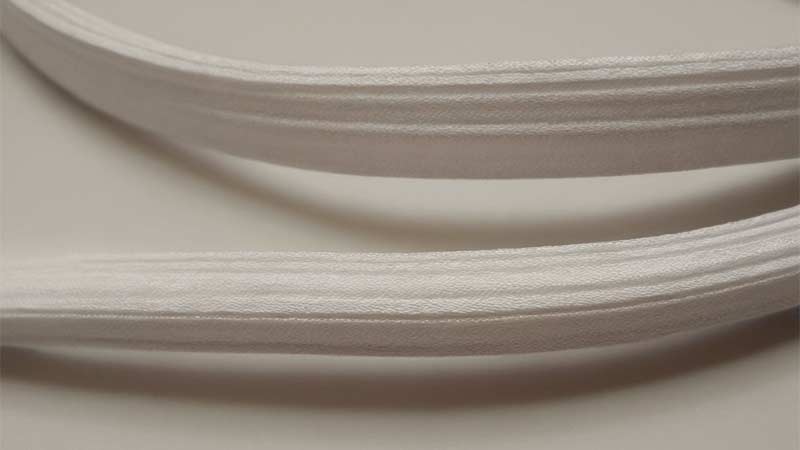
Constructed through the interweaving of fibers, braided elastic stands out for its durability and robustness.
Well-suited for heavy fabrics and garments that undergo frequent stretching, this elastic variety ensures longevity and resilience.
Braided elastic emerges as a reliable choice in skirts designed for everyday use or those exposed to rigorous activities, promising a steadfast and enduring hold that withstands the demands of various movements and fabric weights.
Fold-Over Elastic (FOE)
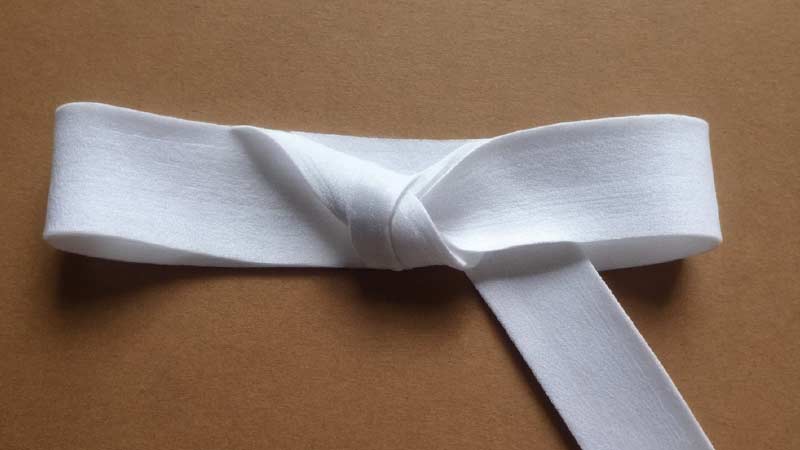
Characterized by a discernible center crease, fold-over elastic (FOE) brings a decorative flair to the realm of skirt construction.
Widely embraced in activewear and dancewear, FOE adds a polished finish to edges and simplifies the process of concealing raw fabric edges.
Its versatility extends to various skirt styles, where a clean and professional aesthetic is desired.
Beyond functionality, FOE becomes a design element, contributing to the visual appeal of the finished garment.
Clear Elastic
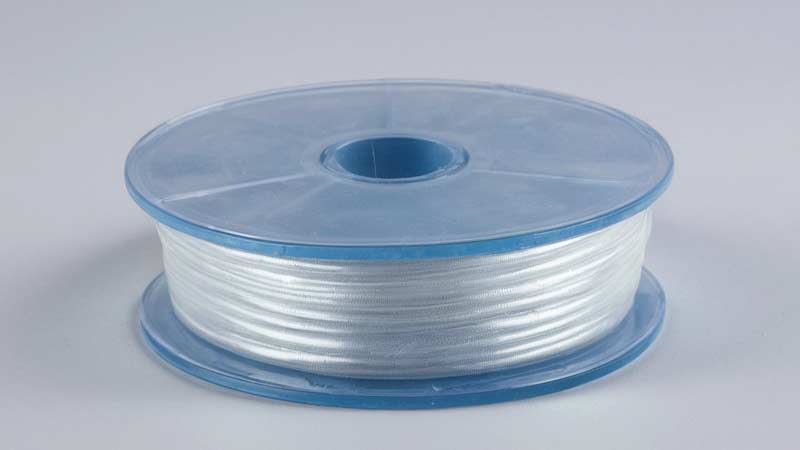
Transparent, lightweight, clear elastic operates discreetly behind the scenes, offering stretch without bulk. Ideal for skirts crafted from lightweight fabrics, it seamlessly integrates into various projects without compromising the garment’s overall appearance.
Clear elastic’s ability to provide necessary support while remaining inconspicuous makes it an invaluable tool for sewists aiming for a sleek and minimalistic finish in their skirt designs.
Wide Waistband Elastic
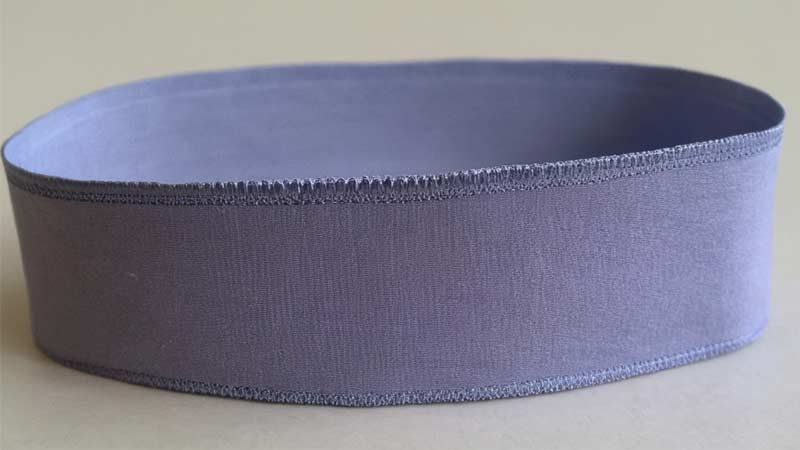
Exceeding the standard width, wide waistband elastic steps into the spotlight as an excellent choice for projects featuring expansive waistbands. Its broader surface area ensures even pressure distribution, enhancing wearer comfort.
This elastic becomes a staple in skirts where a wide, supportive waistband is a functional necessity and a design feature.
Wide waistband elastic provides stability required for larger waistbands, contributing to the garment’s overall structure and aesthetic appeal.
Non-Roll Elastic
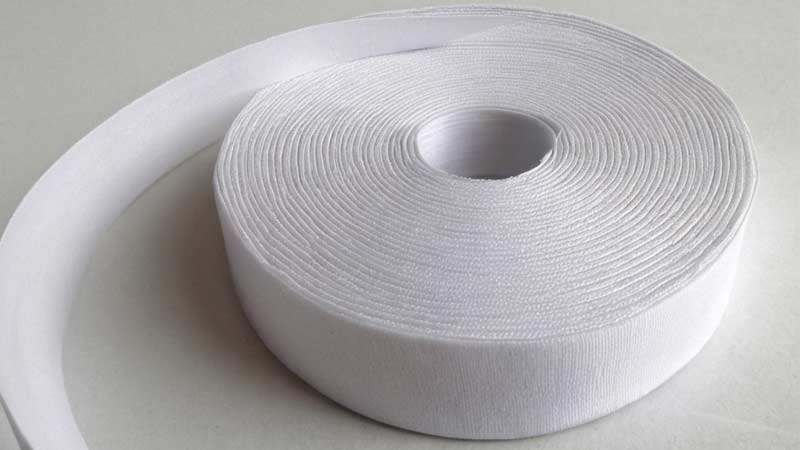
Engineered to resist the common pitfalls of rolling or twisting, non-roll elastic upholds a flat and smooth appearance.
This feature makes it particularly valuable for keeping waistbands in place, preventing discomfort, and maintaining the intended silhouette of the skirt.
Non-roll elastic stability becomes crucial in projects where the elastic’s position within the casing is paramount.
As a practical choice, it ensures that the garment looks refined and retains its desired shape during wear, offering a seamless and hassle-free experience for the wearer.
Features Of The Best Elastic Skirt Waistband
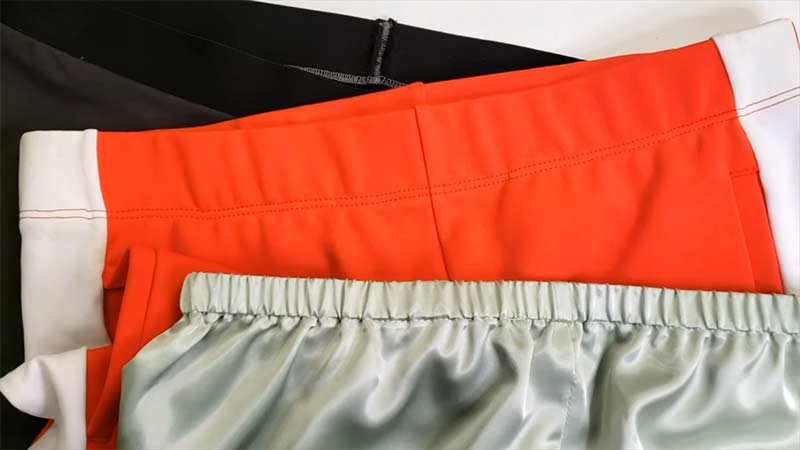
Selecting the best elastic for a skirt waistband is essential to achieving comfort and functionality in your garment.
Here are the features that contribute to making an elastic suitable for this purpose:
Stretch and Recovery
The stretch and recovery of waistband elastic play a pivotal role in a skirt’s overall comfort and functionality.
An elastic with optimal stretchiness effortlessly accommodates the waist’s movement, allowing for comfort during various activities.
Equally crucial is its ability to recover, ensuring the waistband maintains a snug fit after stretching.
This characteristic prevents the elastic from becoming loose over time, contributing to the longevity and consistent performance of the garment.
Comfort
Comfort in a skirt’s waistband is a non-negotiable aspect of wearability. The best elastics prioritize a soft and gentle feel against the skin, allowing the wearer to experience day-long ease.
Elastics such as knit or clear elastic, known for their softer touch, enhance the overall comfort level, making the skirt a pleasure to wear for extended periods without causing irritation or discomfort.
Width
The width of the waistband elastic is a design element that significantly influences aesthetics and functionality.
In the context of a skirt, a wider elastic is advantageous as it distributes pressure more evenly across the waist.
This enhances comfort and minimizes the chances of the elastic twisting or rolling during wear.
A broader elastic contributes to the garment’s stability, providing additional support for a secure and comfortable fit.
Durability
Durability is critical in selecting waistband elastic, especially for skirts subjected to regular use.
Braided elastic, recognized for its robust construction, offers a high level of durability, making it particularly suitable for heavier fabrics and garments that undergo frequent stretching.
A durable elastic ensures that the waistband withstands the rigors of everyday wear, maintaining its integrity over an extended period.
Resistance to Rolling
The ability of waistband elastic to resist rolling or twisting is essential for maintaining a polished and consistent appearance.
Non-roll elastic is precisely engineered to prevent the common issue of the waistband rolling during wear.
This design feature ensures that the elastic maintains a flat and smooth profile, enhancing the overall aesthetics of the skirt while providing a secure and reliable fit throughout the day.
The resistance to rolling contributes to the garment’s polished finish and the wearer’s comfort.
Suitability for Fabric Type
Tailoring the choice of elastic to the fabric type is crucial for achieving comfort and aesthetics in a skirt waistband.
Delicate fabrics, such as silk or chiffon, benefit from the subtlety of clear elastic. This option provides essential support without adding bulk, ensuring the waistband complements the fabric’s drape and delicacy.
On the other hand, heavier fabrics like denim or wool may demand a sturdier choice, such as woven or braided elastic, to provide the necessary support and stability for such materials.
Versatility
The versatility in waistband elastic is crucial for accommodating various sewing projects and styles.
Fold-over elastic, for instance, stands out as a versatile option. Not only does it serve a functional purpose by securing the waistband, but it also adds a decorative edge.
Its adaptability makes it suitable for various skirt styles, ranging from casual, everyday wear to more refined and elegant designs.
Easy to Work With
The ease of working with waistband elastic is a practical consideration for sewists. A suitable elastic should be user-friendly during the sewing process, ensuring it can be easily sewn into the waistband without losing its elasticity.
Fold-over elastic and clear elastic often possess characteristics that make them particularly easy to work with, simplifying the sewing process and contributing to a smoother overall construction.
Invisible Finish
The elastic finish is paramount for those seeking a discreet and minimalist look. Clear elastic or thinner options offer an invisible finish, ensuring the focus remains on the fabric rather than the waistband.
This quality is especially beneficial in projects where subtlety and a seamless appearance are desired, allowing the garment to exude a polished and refined aesthetic.
Resistance to Wear and Tear
The longevity of the waistband elastic is a critical consideration, particularly for skirts that will be worn frequently.
The elastic must resist wear and tear, ensuring the waistband maintains its integrity over time.
This resilience is vital for preserving the garment’s structure and comfort, contributing to a durable and reliable skirt that withstands the rigors of regular use.
FAQs
What type of elastic is best for casual skirts?
Knit elastic is an excellent choice for casual skirts as it provides a soft and stretchy feel, ensuring comfort during everyday wear.
Can I use clear elastic for all types of fabrics?
Clear elastic is ideal for lightweight fabrics where a discreet appearance is desired. However, it may not be suitable for heavy fabrics that require more substantial support.
When is braided elastic a preferred choice?
Braided elastic is a good option for skirts made from heavier fabrics or projects requiring frequent stretching and movement due to its strength and durability.
What is the advantage of using fold-over elastic (FOE)?
Fold-over elastic is advantageous for achieving a clean and finished look, making it popular for activewear or dancewear skirts where a decorative edge is desired.
Is non-roll elastic necessary for all skirts?
Non-roll elastic is particularly useful for maintaining a flat and smooth waistband appearance.
It’s a practical choice, but its necessity depends on the specific requirements of your skirt project.
To Recap
The world of elastic options for sewing skirts is diverse and dynamic, catering to the varied needs of garment construction.
Whether one opts for the soft embrace of knit elastic for everyday comfort or the sturdy hold of woven elastic for tailored elegance, the choice plays a crucial role in achieving the desired outcome.
By understanding the characteristics and suitability of different elastic types, sewists can elevate their skirt creations to new levels of style and functionality.
The art of skirt sewing becomes not just a craft. Still, an exploration of the perfect synergy between fabric and elastic, resulting in garments that seamlessly blend comfort, durability, and fashion.
Leave a Reply